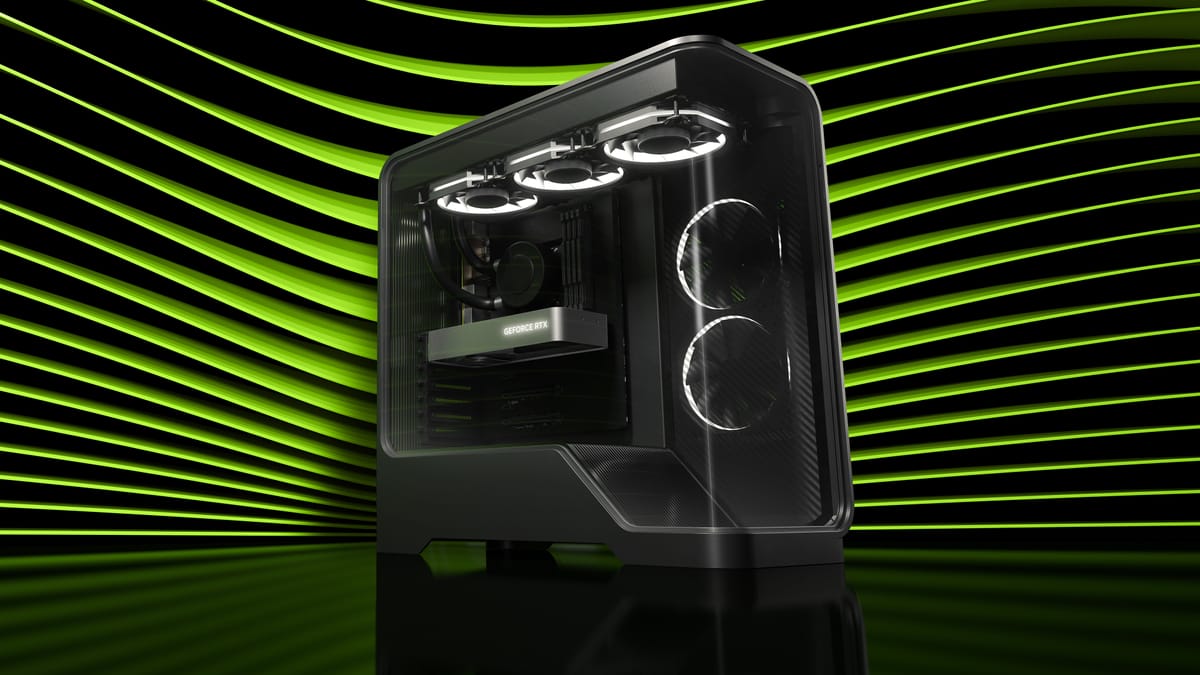Nvidia RTX 5070 Review

The Nvidia RTX 5070: A Powerful Mid-Range GPU with AI Prowess
Nvidia has once again shaken up the graphics card market with the announcement of their latest mid-range offering, the GeForce RTX 5070. Unveiled at CES 2025, this card promises to deliver flagship-level performance at a more affordable price point. With its impressive specifications and cutting-edge features, the RTX 5070 is poised to be a game-changer for PC gamers and content creators alike. In this comprehensive blog post, we'll dive deep into what makes this GPU so special and explore its potential impact on the industry.
Specifications and Features:
1. Blackwell Architecture:
- The RTX 5070 is built on Nvidia's new Blackwell architecture, which brings significant improvements in performance and efficiency.
- Manufactured on a 4nm TSMC process, this GPU packs 6,144 CUDA cores, a substantial increase from its predecessor, the RTX 4070.
- The card also features 50 RT cores for enhanced ray tracing capabilities and 192 Tensor cores for AI-driven tasks.
2. Memory and Bandwidth:
- Equipped with 12GB of cutting-edge GDDR7 memory, the RTX 5070 offers lightning-fast data access.
- The 192-bit memory interface provides a bandwidth of 672.2 GB/s, ensuring smooth performance even in demanding applications.
3. Clock Speeds and Power Efficiency:
- The RTX 5070 boasts impressive clock speeds, with a base clock of 2235 MHz and a boost clock of 2520 MHz.
- Despite its power, the card maintains a TDP of just 250W, thanks to the efficiency improvements of the Blackwell architecture.
- This makes it an attractive option for users who want high performance without the need for a massive power supply.
4. DLSS 4 and AI Capabilities:
- One of the standout features of the RTX 5070 is its support for Nvidia's DLSS 4 technology.
- DLSS 4 introduces multi-frame generation, which can create up to three artificial frames for every rendered frame, resulting in a perceived 4x frame rate multiplication.
- This technology leverages the power of the GPU's Tensor cores to deliver AI-enhanced visuals and improved performance in supported games.
With its impressive specifications, AI capabilities, and attractive price point, the RTX 5070 offers a compelling option for gamers and content creators who want flagship-level performance without breaking the bank.
Performance and Value:
1. Comparison to RTX 4090:
- Nvidia has made bold claims about the RTX 5070's performance, stating that it can match the previous generation's flagship, the RTX 4090, in certain scenarios.
- While these claims are based on the use of DLSS 4, it's still an impressive feat for a mid-range card.
- In raw rendering performance, the RTX 5070 is estimated to be around 25% faster than the RTX 4070, according to early benchmarks.
2. Price and Market Positioning:
- With a launch price of $549, the RTX 5070 offers excellent value for its performance level.
- It's significantly cheaper than the RTX 4090, which launched at $1,599, making high-end gaming and content creation more accessible to a wider audience.
- The card is well-positioned to compete with AMD's offerings in the same price segment, such as the anticipated RDNA 4 lineup.
3. Real-World Performance:
- While the RTX 5070's performance claims are impressive, it's important to note that they heavily rely on the use of DLSS 4 technology.
- In games that don't support DLSS 4, the performance advantage over the previous generation may be less pronounced.
- However, with an increasing number of games adopting DLSS, the RTX 5070 is still expected to deliver excellent performance across a wide range of titles.
Conclusion:
The Nvidia RTX 5070 is shaping up to be a formidable contender in the mid-range GPU market. With its impressive specifications, AI capabilities, and attractive price point, it offers a compelling option for gamers and content creators who want flagship-level performance without breaking the bank. As more real-world benchmarks and reviews become available, we'll have a clearer picture of how the RTX 5070 stacks up against the competition. However, based on the information we have so far, it's safe to say that Nvidia has once again raised the bar for what we can expect from a mid-range graphics card.



Comments ()